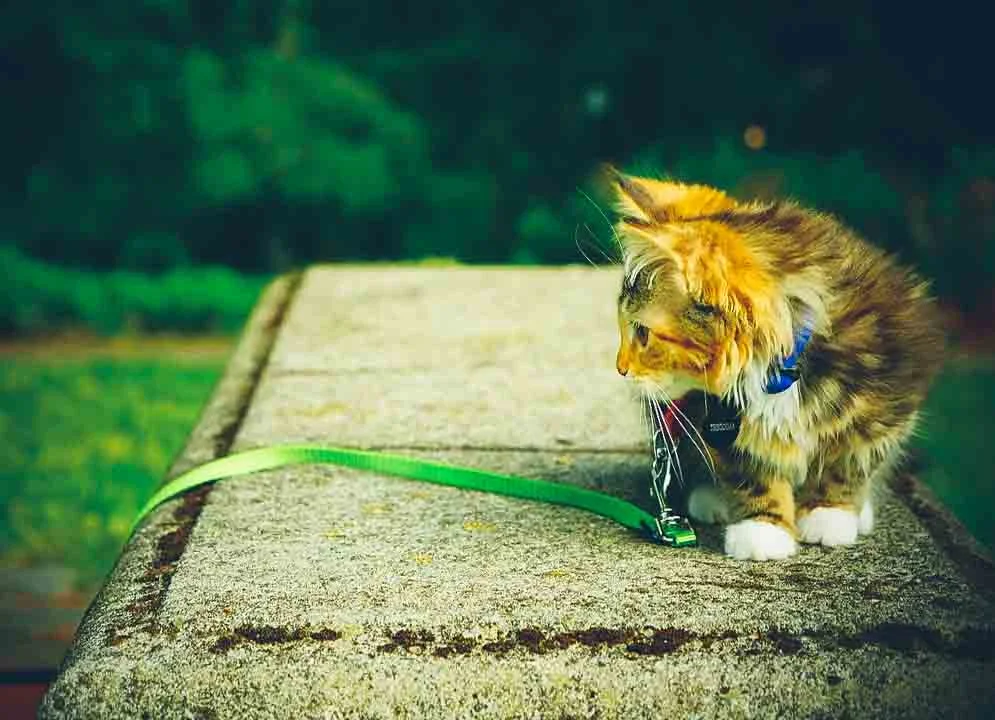Leashes & Leads to Use When Walking Your Cat
One of the most important tools for walking your cat on a leash is... well the leash!
At first, choosing a lead doesn’t sound very complicated. However, there are many options available on the market! We asked our community what leashes they use while walking their cat.
Choose a Leash that Suits Your Cat
As with anything we find with training your cat to explore the world with you, the leash you use to walk your cat is dependent on... you guessed it, your cat!
Cats who love to sprint and then stop to explore may be more suitable to a retractable leash, while cats who like to go slow and steady can use a normal short fabric leash. Some cats are susceptible to more sudden movements, and a bungee chord may be more suitable for them.
Choose a Leash Based on What You & Your Cat are Doing
There are many ways to go catexploring and different leashes are suitable for whatever activity you and your cat are doing.
Vary Leash Length
If you and your cat are in an area where there is a higher chance of being spooked (by dogs, cars, people etc) or their owners are concerned for their safety (particularly in urban areas), we suggest that you use a shorter leash.
However, if you are in an area (like an isolated area or your backyard) where you are less likely to come across these stimulants, you can use a longer leash.
Vary Leash Materials
Leashes can be made out of various materials and you can choose on that suits your activity.
For example, if you are hiking through rugged terrain you can use a stronger leash that can handle abrasions while you can use a marine rope for water activities.
We also like the idea of using a brightly coloured leash for hiking as it will help you find your cat easily, if they run off with their leash.
Types of Leashes
This article contains affiliate links. If you make a purchase from these links, at no cost to you, Catexplorer will receive a small commission.
Retractable Leashes
The length of retractable leashes can be adjusted via a mechanism you hold.
When choosing a retractable lead we suggest you look a lightweight one with with:
a flat leash as they are less likely to tangle and pick up dirt
a retractable leash with a locking mechanism, so that you can keep the leash to the length that you need
a wrist strap so that you can still hold on, without your hands - a great suggestion for a wrist strap is one for a mobile phone
A concern with retractable leashes is that they may make it harder to control your cat in an emergency, particularly if the leash is extended a fair way out. In order to avoid this scenario, we suggest that your cat is close enough to you at all times.
Furthermore, retractable leashes may be difficult to use when you are wearing gloves in winter.
Bungee Leashes
Bungee leashes help reduce the pressure your cat feels if they make sudden movements. These are particularly useful if your cat tends to make sudden and unexpected movements while you are walking them on a leash.
A concern with bungee leashes if that they have a tendency to gather dirt on the fabric that covers the ‘bungee’.
Other Leashes
There are many other leads that you can use including:
leads made out of fabric/webbing
handmade leashes from rope and other materials, clippings can be from rock climbing harnesses
parachute cords.
Leash Laws
When picking a leash for walking your cat, bear in mind that your area may have a law that states the maximum length of a lead for a pet.
Typically this is 6 ft (1.8 m). We suggest that you check what your local area states about leash length for animals/dogs. If there is no rule for cats a safe rule is to follow the requirements for dogs.
What kind of leash do you use for walking your cat?

